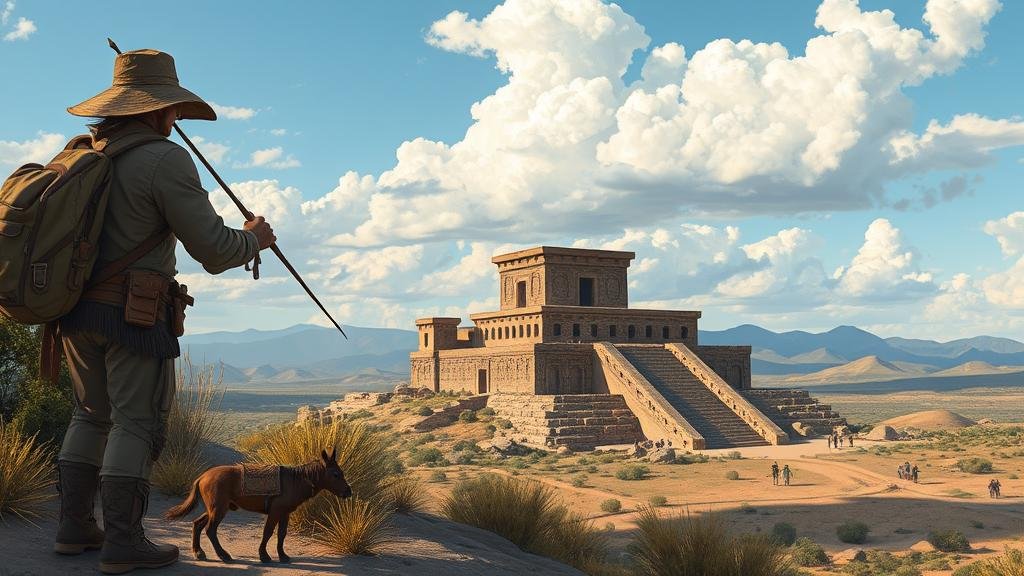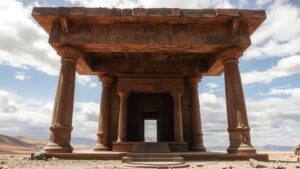Searching for the fabled city of Quivira, a rumored site of wealth described by Spanish explorers.
The Search for the Fabled City of Quivira
The legend of Quivira has fascinated explorers, historians, and treasure-hunters for centuries. Described by Spanish conquistadors in the early 17th century, Quivira was rumored to be a city overflowing with riches, including gold and silver. This mythical city is often associated with the broader search for the Seven Cities of Gold, which captivated European explorers as they ventured into the New World. This article delves into the historical context of Quivira, the explorers who sought it, and the ongoing quest to find this elusive treasure trove.
Historical Context and Background
The fabled city of Quivira is primarily linked to the infamous explorer Francisco Vázquez de Coronado. In 1540, Coronado led an expedition from Mexico northward across what is now the southwestern United States with the aim of finding the rumored wealth of the Seven Cities of Gold. His journey took him through present-day Arizona, New Mexico, Texas, and Kansas.
According to accounts from Coronados expedition, Quivira was described as a prosperous land inhabited by the Turkic people. This city was characterized by its grand structures made of gold and silver, leading many to believe it was a veritable El Dorado waiting to be discovered.
The Expedition to Quivira
In the search for Quivira, Coronado and his team covered vast and challenging terrains. Key milestones in Coronados expedition include:
- The discovery of the Grand Canyon in 1540, though he did not explore it fully.
- The encounter with the Zuni and Hopi tribal communities, who provided Coronado with information about the lands to the east.
- The significant journey to the Great Plains, where he finally encountered the region believed to be Quivira in present-day central Kansas.
Despite extensive exploration, Coronados expedition yielded no treasure. Instead, he returned to Mexico in 1542 without any of the riches he had hoped to find.
Geographical Identifications of Quivira
Over the years, historians and archaeologists have theorized about the possible locations of Quivira. Primary candidates include:
- Central Kansas: Many researchers believe that the Wichita region is the most likely site of the mythical city, given the descriptions from Coronado’s expedition.
- Eastern Colorado: Some historians suggest that areas near the Arkansas River could match the descriptions given by the Spanish explorers.
Modern archaeology has revealed various Native American settlements that could have inspired the tales of Quivira. Modern technologies, such as ground-penetrating radar, have also been employed to survey these areas more effectively.
Legends and Cultural Impact
The legend of Quivira has had a lasting impact on American folklore and history. It represents the broader theme of the search for wealth that characterized much of the European exploration during the Age of Discovery. tales of Quivira inspired other expeditions and explorers, reinforcing the myth of cities of gold in North America.
Additions to the lore of Quivira also feature prominently in popular culture, seen in literature, films, and games that immortalize the thrill of treasure hunting and adventure.
Modern Archaeological Efforts and Findings
While the fabled city has not been conclusively identified, modern archaeological ventures continue to explore the areas associated with Quivira’s legend. Notable initiatives include:
- The Quivira State Park in Kansas, which serves as a focal point for researchers investigating the historical geography of the region.
- Continued studies by organizations such as the Kansas Historical Society, which aim to better understand the lives of the Native American tribes encountered by Coronado.
Although concrete evidence of Quivira remains elusive, historical records and modern excavation techniques have provided valuable insights into the cultures that animated the area long before the arrival of Europeans.
Conclusion: The Legacy of Quivira
The search for Quivira embodies the intersection of myth, history, and exploration. Though its treasure has not yet been uncovered, the ongoing quest ensures that the spirit of adventure continues to thrive. legend prompts deeper inquiries into the Native American cultures of the Great Plains and the impact of European exploration. Whether or not Quivira ever existed as described by Coronado, its story remains a captivating chapter in the saga of America’s early exploration, a reminder of the dreams and aspirations that guided many into the unknown.
Actionable Takeaways
- Consider visiting historical sites in central Kansas to engage with the rich lore surrounding Quivira.
- Stay informed on archaeological findings, which may eventually shed light on the physical remnants of the fabled city.
- Explore literature and documentaries that delve into the stories of early explorers in North America, offering a greater understanding of the periods cultural context.



